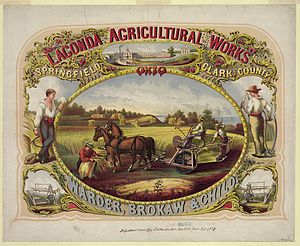Edwin Forbes | |
|---|---|
 | |
| Born | 1839 |
| Died | March 6, 1895 (aged 55–56) |
| Resting place | Green-Wood Cemetery |
| Nationality | American |
| Known for | Landscape painter and etcher |
| Notable work | Military subjects |



Edwin Austin Forbes (1839 – March 6, 1895) was an American landscape painter and etcher who first gained fame during the American Civil War for his detailed and dramatic sketches of military subjects, including battlefield combat scenes.[1]
Biography
[edit]Forbes was born in New York, studied under Arthur Fitzwilliam Tait, and began as an animal and landscape painter. During the Civil War, he was special artist for Frank Leslie's Magazine. Many of the spirited etchings he drew during the conflict were later presented by General Sherman to the government. They are now preserved in the War Office at Washington because of their historic value.
After the war, Forbes painted landscape and cattle scenes, among which are "Orange County Pasture" (1879) and "Evening—Sheep Pasture" (1881). In 1877 he was made an honorary member of the London Etching Club.
He died in 1895 in Brooklyn and is interred in Green-Wood Cemetery.
References
[edit]- ^ "Edwin Austin Forbes". ClanForbesSociety. Retrieved July 27, 2023.
- This article incorporates text from a publication now in the public domain: Gilman, D. C.; Peck, H. T.; Colby, F. M., eds. (1905). New International Encyclopedia (1st ed.). New York: Dodd, Mead.
{{cite encyclopedia}}: Missing or empty|title=(help)
External links
[edit]- Life Studies of the Great Army, a digital collection of The University of Alabama Libraries Division of Special Collections
- Green-Wood Cemetery Burial Search
Well, that’s interesting to know that Psilotum nudum are known as whisk ferns. Psilotum nudum is the commoner species of the two. While the P. flaccidum is a rare species and is found in the tropical islands. Both the species are usually epiphytic in habit and grow upon tree ferns. These species may also be terrestrial and grow in humus or in the crevices of the rocks.
View the detailed Guide of Psilotum nudum: Detailed Study Of Psilotum Nudum (Whisk Fern), Classification, Anatomy, Reproduction